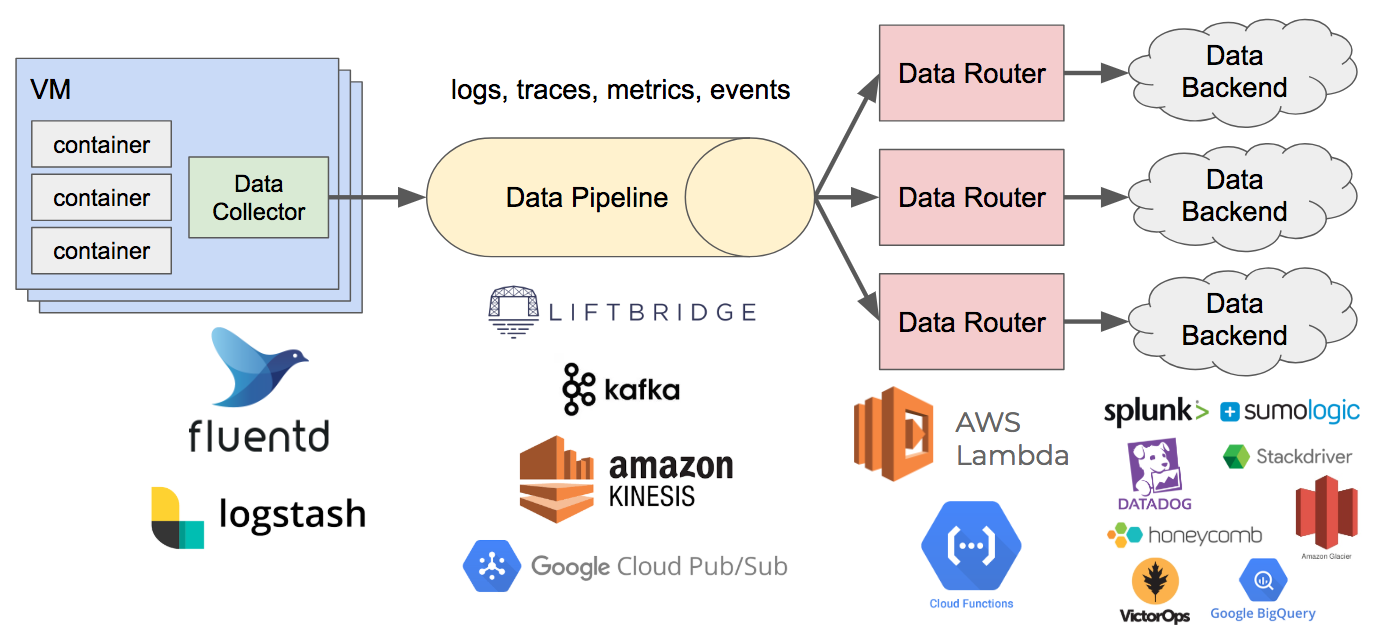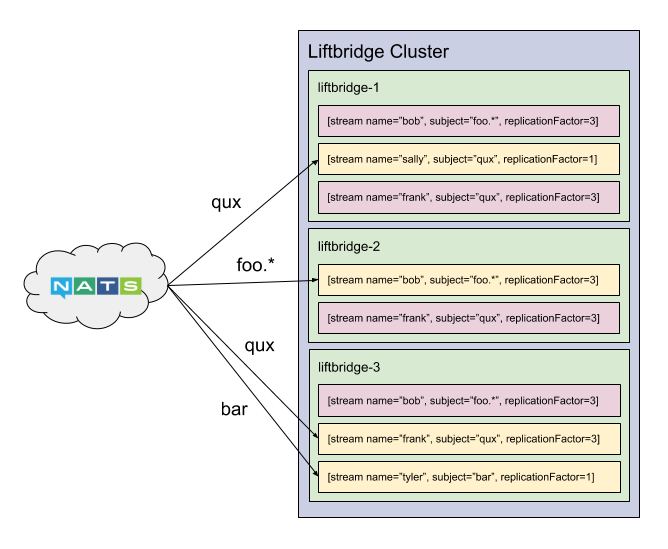NewOps is not a replacement for DevOps, it’s an evolution of it by looking at Operations through the lens of product. It’s what I’ve come to call “Developer Enablement” because the goal is to shift the focus of Ops teams from being masters of production to enablers of production. Through Developer Enablement, teams are enabled—and tasked with the responsibility—to control their own destiny. This extends far beyond just the responsibility of building products. It includes how we build, test, secure, deploy, monitor, and operate systems.
For some, this might come naturally. Many startups don’t have the privilege of siloing up their organizations (although you’d be surprised!). For others, this can be a major shift in how we build software. Especially in large, established organizations with more specialized roles, responsibilities can be so siloed people aren’t even aware they’re happening. Basic “ilities” like scalability, reliability, and even security become someone else’s responsibility. “Good Operations” means no one even knows you’re there, unless something goes wrong.
So when this is turned on its ear, and these responsibilities are placed on the dev team’s shoulders, how do they adapt? In many cases, teams are eager to take on these new responsibilities but also blissfully unaware of what that actually entails. DBAs are a good example of this. Often a staple of enterprise IT Ops, DBAs are tasked with—among other things—installing and patching DBMSs, performing backups, managing HA and DR strategies, balancing database workloads, managing resources, tuning performance, configuring security settings, and monitoring systems. Many of these responsibilities are invisible to developers.
With cloud and Developer Enablement, this can change in profound ways. However, in a typical lift-and-shift, the role of DBAs is widely unchanged. In this case, we’re just running the same stuff in someone else’s data center. There are still databases to be patched, replication to be managed, backups to be made, and so on. But pure lift-and-shifts, at least as an end goal, are largely a misstep. You throw away all that institutional memory—the knowledge and experience you have managing your own data center—for more expensive compute with which you have less experience administering. Things change when we start to rely on managed cloud services. We no longer run our own databases on VMs but instead rely on cloud-managed ones. This is where things become much more grey—but also much more interesting.
Developer Enablement in the Cloud
First, a quick aside. There are two different concepts we’re talking about here: cloud and Developer Enablement (DevOps for brevity). These are two distinct but related concepts. We can “do” DevOps on-prem, just as we can in the cloud. Likewise, we can also do traditional Operations in the cloud, just as we can on-prem. One of the benefits of cloud is it allows us to focus more investment on business-differentiating things, but it also makes implementing DevOps easier for two reasons. First, the cloud provider takes on more operational responsibilities (the stuff that supports—but doesn’t directly contribute to—business value). Second, it provides a lower barrier to self-service infrastructure. This means developers can, of their own accord, provision and manage supporting infrastructure like databases, caches, queues, and other things without a go-between or the customary “throw-it-over-the-wall” approach. This is a key part of Developer Enablement.
In the world of Developer Enablement in the cloud, what is the role of a DBA, or any other Ops person for that matter? When you start to map who is accountable for what, you quickly realize there is far too much nuance to cleanly map responsibilities. Which cloud provider are we talking about? Within that cloud provider, which database offering? Proprietary NoSQL databases like Google’s Cloud Datastore? Relational databases like Amazon’s RDS? Globally-distributed databases like Spanner? How we handle things like HA and DR vary drastically depending on the service and service provider. In some cases, the vendor is entirely responsible, e.g. because the database has built-in replication. In other cases, the customer. Sometimes it’s a combination of both, such as a database that has automated backups which must first be enabled. It’s not as cut and dry as it used to be.
As we push more responsibility onto developers, how do we ensure they are actually tackling all of those responsibilities, especially the ones they might not even know about? How do we implement DevOps responsibly?
The goal of Developer Enablement is not to enable developers by giving them total control and free rein. Instead, it’s to empower them in a way that is “safe” for the business. People often misconstrue DevOps and automation as things that reduce lead times and increase deployment frequencies by simply pulling security out of the process. This is categorically not the purpose of DevOps. In fact, the intention is to improve security by integrating it more deeply and earlier into the process in a more reliable and repeatable way, i.e. “shift left.” Developer Enablement is about providing the tools, automation, services, and standards teams need to do just this.
So when we say we want to implement DevOps and Developer Enablement, we’re not saying we want to hand developers the keys to production with a pat on the back. We’re saying we want to pave a path to production which allows developers to release software in a way that is safe and secure with greater autonomy—because autonomy enables building more reliable software faster. In this world, Operations teams become increasingly Developer Enablement teams because there is simply less stuff to operate. It becomes more about supporting development teams and organizing around products than acting purely as a gatekeeper or service provider. It’s pretty amazing how things start to improve when you align yourself this way.
Responsibilities of Developer Enablement
Those Operations teams still have extremely valuable skill sets however. It’s just that they start to act more in an advisory role than the assembly-line-worker role converting Jira tickets into outputs. For instance, DBAs have deep expertise on the intricacies and operations of various database systems, but when Amazon is now responsible for installing the database, patching it, scaling it, monitoring it, performing backups, managing replication and failovers, and handling encryption and security, what do the DBAs do? They become domain experts and developer advocates. They make sure teams aren’t shooting themselves—or the company—in the foot and provide domain expertise and tooling in a supporting role. When a developer complains about a slow query, they are the ones who can help them identify, understand, and fix the problem. “It’s doing a full-table scan since you’re missing an index,” or “You have a hot partition because you’re using a timestamp as the partition key. Try using a more uniform ID to distribute workloads evenly.” These folks can often help developers better structure their data to improve application performance and scalability.
In addition to this supporting role, these Developer Enablement teams also help ensure dev teams are thinking about all the things they need to be considering. In the case of data, how is encryption handled? HA? DR? Data migrations? Rollbacks? Not that all of these things need to be handled by the teams themselves—again, often the cloud provider has it covered—but simply ensuring that they have been considered and can be spoken to is important. It’s vital to start this conversation early in the development process.
The Three Phases of Development
There are basically three phases of development to consider. There’s the “playground” phase, which is when teams are essentially exploring different technologies. At this stage, there can be little-to-no oversight outside of controlling cloud spend (which is important for when your intern accidentally starts a task bomb before leaving for the weekend). Teams are free to try out new ideas without worrying about production. Often this work happens in a separate “experimentation” cloud project.
Next, there’s the “green-light” phase. The thing being built is going to production, it’s part of the company’s strategic plan, people are talking about it, etc. At this point, we start an ongoing dialogue with the team and provide them with a list of the key things to be thinking about. This should not be a 10-page document. It should be a one-page document hitting the main areas. An example portion of this might look like the following:
- How do you plan to implement HA?
- What classifications of data will this system handle and how do you plan to secure that data in transit and at rest?
- How much traffic do you expect the system to handle and how will you scale it?
- How will the system handle authentication and authorization?
- What are the integration points?
- Who will support the system in production?
- What is the CI/CD story for the system?
- What is the testing strategy?
Depending on your company’s culture, this can sometimes be seen as an affront or threat to teams if they’re used to Ops or InfoSec groups gatekeeping. That is not the goal as it’s intended to be in an advisory capacity. This ends up having a couple benefits. First, it gets teams thinking about and planning for key operational items, and second, it uncovers any major gaps early in the process. The number of times I’ve heard someone ask, “What’s HA?” after reading this list is non-zero. The purpose of this isn’t to shame anyone, just to provide a way to start critical discussions between the team and Developer Enablement groups.
Finally, there’s the “ready-for-production” phase. The team is ready to ship what they’ve been building. This is where things get real. Typically, there are a few things that should happen here. When launching a new service or product, there should be a comprehensive review of the system. The team will sit down with a group of their peers, architects, and security engineers and walk them through the system. People hate the dreaded architecture review, so we call it a product technical walkthrough instead.
Operational Readiness and Change Management
About a month or so prior to the walkthrough, the team should be working through an “operational-readiness checklist” which is used to guide the walkthrough. This checklist is much more detailed than the previous one, enumerating items like what the deploy process consists of, configuration management, API versioning, incident-response procedures, system observability, etc. The checklist we commonly use with clients at Real Kinetic is about seven pages long and covers 10 areas: Deployment, Testing, Reliability/Failover, Architecture, Costs, Security, CI/CD, Infrastructure, Capacity/Performance Estimates, and Operations and Support. This checklist is used to probe different areas. If certain areas feel a little weak, this can lead to deeper discussions depending on the importance or severity. If a system is particularly critical to the business or high-risk, this process can veto a release. Having a sign-off process like this makes some people nervous, but it’s important to point out that this should only apply to new launches. It is not a general change-management process. It’s really about helping teams learn about running systems in production and understanding what that takes.
In addition to the product technical walkthrough, we also recommend doing a security assessment for new services. This usually encompasses a vulnerability and threat assessment, risk assessment, pen testing, the whole nine yards. I usually also like to see some sort of load profiling done on the service before putting it in production (though load and chaos testing should ideally be part of the normal development process, not saved for the very end).
When it comes to infrastructure, there’s also the question of how to manage changes. This is where infrastructure as code (IaC) becomes hugely important as it not only provides a way to automate infrastructure changes, but also a means to review those changes. We can treat infrastructure changes in the same way we treat application changes—storing them in source control, doing code reviews on them, running them through static analysis tools, and so forth. Infrastructure changes, like all changes, should go through a code review process. It cannot be overstated how essential code reviews are and how much they benefit your organization. And once again, this is where Developer Enablement comes into play. I recommend IaC changes be reviewed by a Developer Enablement team member. This provides a touchpoint where they can provide domain expertise and ensure changes are within acceptable parameters. If a developer is requesting a change which falls outside those parameters, such as a database instance with 1TB of RAM for example, it requires a conversation and sign-off process.
Conclusion
With Developer Enablement, what used to be Operations becomes primarily a product and advisory team. “Product” in the sense of providing systems and tools that help developers take on more responsibility, from day-to-day development to operations and support. “Advisory” in the sense of offering domain expertise and guidance. Through this approach, we get better alignment by giving engineers end-to-end ownership from development to on-call and improve efficiency by reducing handoffs. This also lets us scale more effectively. Through products and reduced hand-offs, a Developer Enablement group can empower far more engineers than any conventional Ops team could.
 (@brianleroux)
(@brianleroux) 


